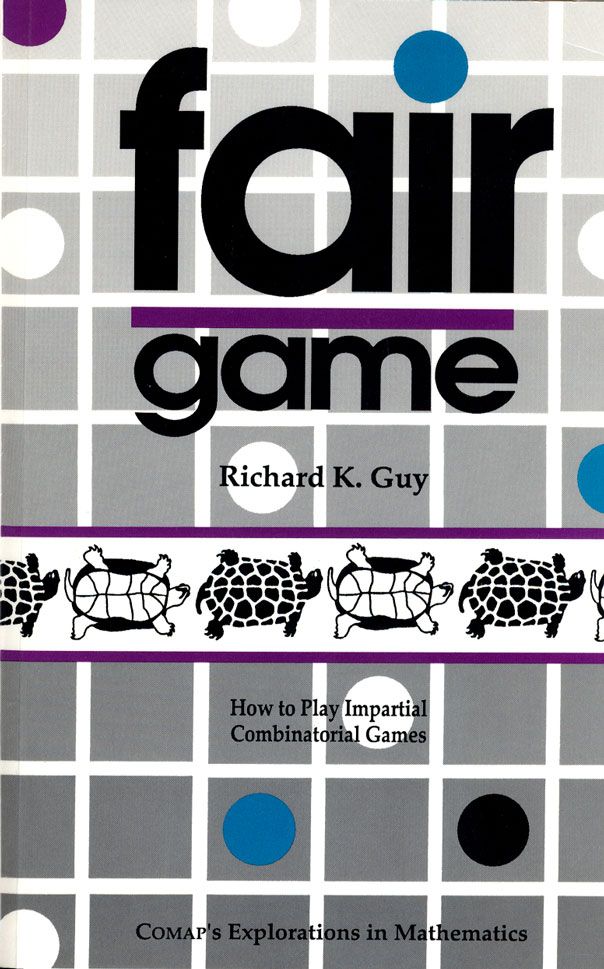Fair Game: How to Play Impartial Combinatorial Games
Author: Richard Guy
Fair Game suggests successful strategies to play and win impartial combinatorial games. Beginning with a simple nim-sum game and adding combinatorial requirements, the subsequent games paint a powerful picture of game theory and the human element of choice as they relate to mathematics.
Is a game "partizan" or "impartial"?
Do all combinatorial games follow universal patterns?
Read Fair Game and remove the element of chance from the gaming table.
Master deduction skills by playing Nimble, Nim, Poker Nim, Bogus Nim-heaps, The Mex Rule, Cram, Kayles, Grundy's Game, SheLoves-Me, She-Loves-Me-Knot, Brussels Sprouts, Dawson's Chess, Welter's Game, and Frieze Patterns, each complete with exercises and solutions.
Contents
Nimble
Nim
Poker Nim
Impartial Games
Lasker's Nim
Bogus Nim-heaps
Sums of Games
The Mex Rule
Cram
The Sprague-Grundy Theory
Kayles
Grundy's Game
Grundy Scales
She-Loves-Me, She-Loves-Me-Knot
Brussels Sprouts
Knots
Subtraction Games
Octal Games and the Guy-Smith Code
Dawson's Chess
When Are Nim-Sequences Periodic?
Treblecross
Sparse Spaces and Common Cosets
Misere Nim and an Awful Warning
Coin-Turning Games
Circumscribed Games
Turnips
Grunt
Sym
Welter's Game
The Mating Method
Frieze Patterns
Green Hackenbush
Remoteness
Answers to Exercises
References
Glossary-cum-Index

Mathematics Topics:
Application Areas:
You must have a Full Membership to download this resource.
If you're already a member, login here.